By Eric Vandenbroeck and co-workers
The Way Forward In Ukraine
In the early hours of
February 24, 2022, the Russian air force struck targets across Ukraine. At the same
time, Moscow’s infantry and armor poured into the country from the north, east,
and south. In the days that followed, the Russians attempted to encircle Kyiv.
These were the first
days and weeks of an invasion that could well have resulted in Ukraine’s defeat
and subjugation by Russia. In retrospect, it seems almost miraculous that it
did not.
What happened on the
battlefield is relatively well understood. What is less understood is the
simultaneous intensive diplomacy involving Moscow, Kyiv, and a host of other
actors, which could have resulted in a settlement just weeks after the war
began.
By the end of March
2022, a series of in-person meetings in Belarus and Turkey and virtual
engagements over video conference had produced the so-called Istanbul
Communiqué, which described a framework for a settlement. Ukrainian and Russian
negotiators then began working on the text of a treaty, making substantial
progress toward an agreement. But in May, the talks broke off. The war raged on
and has since cost tens of thousands of lives on both sides.
What Happened? How Close Were The Parties To Ending
The War? And Why Did They Never Finalize A Deal?
To shed light on this
often overlooked but critical episode in the war, we have examined draft
agreements exchanged between the two sides, some details of which have not been
reported previously. We have also conducted interviews with several participants
in the talks as well as with officials serving at the time in key Western
governments, to whom we have granted anonymity in order to discuss sensitive
matters. And we have reviewed numerous contemporaneous and more recent
interviews with and statements by Ukrainian and Russian officials who were
serving at the time of the talks. Most of these are available on YouTube but
are not in English and thus not widely known in the West. Finally, we
scrutinized the timeline of events from the start of the invasion through the
end of May, when talks broke down. When we put all these pieces together, what
we found is surprising—and could have significant implications for future
diplomatic efforts to end the war.
Some observers and
officials (including, most prominently, Russian President Vladimir Putin) have
claimed that there was a deal on the table that would have ended the war but
that the Ukrainians walked away from it due to a combination of pressure from their
Western patrons and Kyiv’s own hubristic assumptions about Russian military
weakness. Others have dismissed the significance of the talks entirely,
claiming that the parties were merely going through the motions and buying time
for battlefield realignments or that the draft agreements were unserious.
Although those
interpretations contain kernels of truth, they obscure more than they
illuminate. There was no single smoking gun; this story defies simple
explanations. Further, such monocausal accounts elide completely a fact that,
in retrospect, seems extraordinary: amid Moscow's unprecedented aggression, the
Russians and the Ukrainians almost finalized an agreement that would have ended
the war and provided Ukraine with multilateral security
guarantees, paving the way to its permanent neutrality and, down the road,
its membership in the EU.
A final agreement
proved elusive, however, for several reasons. Kyiv’s Western partners were
reluctant to be drawn into a negotiation with Russia, particularly one that
would have created new commitments for them to ensure Ukraine’s security. The
public mood in Ukraine hardened with the discovery of Russian atrocities at Irpin and Bucha.
And, with the failure of Russia’s encirclement of Kyiv, President Volodymyr
Zelensky became more confident that, with sufficient Western support, he could
win the war on the battlefield. Finally, although the parties’ attempt to
resolve long-standing disputes over the security architecture offered the
prospect of a lasting resolution to the war and enduring regional stability,
they aimed too high, too soon. They tried to deliver an overarching settlement
even as a basic ceasefire proved out of reach.
Today, when the
prospects for negotiations appear dim and relations between the parties are
nearly nonexistent, the history of the spring 2022 talks might seem like a
distraction with little insight directly applicable to present circumstances.
But Putin and Zelensky surprised everyone with their mutual willingness to
consider far-reaching concessions to end the war. They might well surprise
everyone again in the future.
Assurance Or Guarantee?
What did the Russians
want to accomplish by invading Ukraine? On February 24, 2022, Putin gave a
speech in which he justified the invasion by mentioning the vague goal of “denazification” of the country. The most reasonable
interpretation of “denazification” was that
Putin sought to topple the government in Kyiv, possibly killing or capturing
Zelensky in the process.
Yet days after the
invasion began, Moscow began probing to find grounds for a compromise. A war
Putin expected to be a cakewalk was already proving anything but, and this
early openness to talking suggests he appears to have already abandoned the
idea of outright regime change. Zelensky, as he had before the war, voiced an
immediate interest in a personal meeting with Putin. Though he refused to talk
directly with Zelensky, Putin did appoint a negotiating team. Belarussian
President Alexander Lukashenko played the part of mediator.
The talks began on
February 28 at one of Lukashenko’s spacious countryside residences near the
village of Liaskavichy, about 30 miles from the
Ukraine-Belarus border. The Ukrainian delegation was headed by Davyd Arakhamia,
the parliamentary leader of Zelensky’s political party, and included Defense
Minister Oleksii Reznikov, presidential adviser Mykhailo Podolyak, and other
senior officials. The Russian delegation was led by Vladimir
Medinsky, a senior adviser to the Russian president who had earlier served
as culture minister. It also included deputy ministers of defense and foreign
affairs, among others.
At the first meeting,
the Russians presented a set of harsh conditions, effectively demanding
Ukraine’s capitulation. This was a nonstarter. But as Moscow’s position on the
battlefield continued to deteriorate, its positions at the negotiating table
became less demanding. So on March 3 and March 7, the parties held a second and
third round of talks, this time in Kamyanyuki,
Belarus, just across the border from Poland. The Ukrainian delegation presented
demands of their own: an immediate cease-fire and the establishment of
humanitarian corridors that would allow civilians to safely leave the war zone. It
was during the third round of talks that the Russians and the Ukrainians appear
to have examined drafts for the first time. According to Medinsky, these were Russian drafts, which Medinsky’s delegation brought from Moscow and
which probably reflected Moscow’s insistence on Ukraine’s neutral status.
At this point,
in-person meetings broke up for nearly three weeks, though the delegations continued
to meet via Zoom. In those exchanges, the Ukrainians began to focus on the
issue that would become central to their vision of the endgame for the war:
security guarantees that would oblige other states to come to Ukraine’s defense
if Russia attacked again in the future. It is not entirely clear when Kyiv
first raised this issue in conversations with the Russians or Western
countries. But on March 10, Ukrainian Foreign Minister Dmytro Kuleba, then in
Antalya, Turkey, for a meeting with his Russian counterpart, Sergey Lavrov,
spoke of a “systematic, sustainable solution” for Ukraine, adding that the
Ukrainians were “ready to discuss” guarantees it hoped to receive from NATO
member states and Russia.
Podolyak and Ukrainian Ambassador to Turkey Vasyl
Bodnar after a meeting with the Russians, Istanbul, March 2022
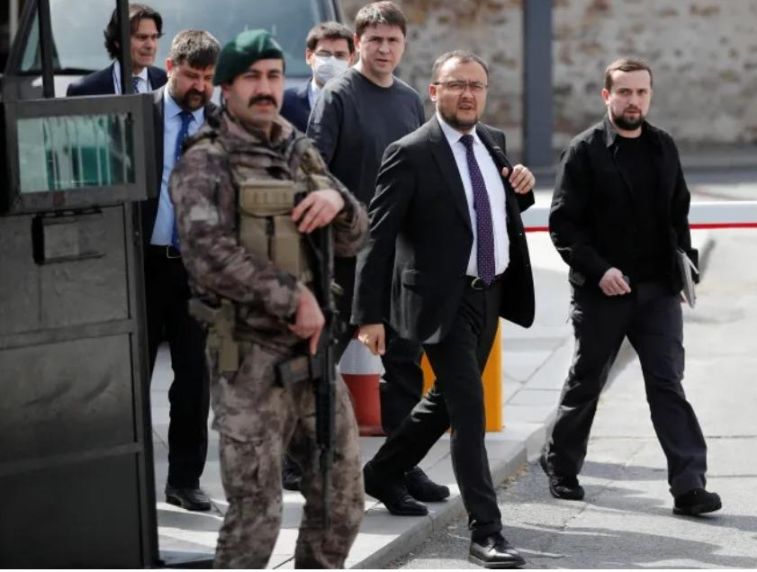
What Kuleba seemed to
have in mind was a multilateral security guarantee, an arrangement whereby
competing powers commit to the security of a third state, usually on the
condition that it will remain unaligned with any of the guarantors. Such
agreements had mostly fallen out of favor after the Cold War. Whereas alliances
such as NATO intend to maintain collective defense
against a common enemy, multilateral security guarantees are designed to
prevent conflict among the guarantors over the alignment of the guaranteed
state, and by extension to ensure that state’s security.
Ukraine had a bitter
experience with a less ironclad version of this sort of agreement: a
multilateral security assurance, as opposed to a guarantee. In 1994, it signed
on to the so-called Budapest Memorandum, joining the Nuclear Nonproliferation
Treaty as a nonnuclear weapons state and agreeing to give up what was then the
world’s third-largest arsenal. In return, Russia, the United Kingdom, and the
United States promised that they would not attack Ukraine. Yet contrary to a
widespread misconception, in the event of aggression against Ukraine, the
agreement required the signatories only to call a UN Security Council meeting,
not to come to the country’s defense.
Russia’s full-scale
invasion—and the cold reality that Ukraine was fighting an existential war on
its own—drove Kyiv to find a way to both end the aggression and ensure it never
happened again. On March 14, just as the two delegations were meeting via Zoom,
Zelensky posted a message on his Telegram channel calling for “normal, effective security guarantees” that
would not be “like the Budapest ones.” In an interview with Ukrainian
journalists two days later, his adviser Podolyak explained that what Kyiv sought were “absolute security
guarantees” that would require that “the signatories . . . do not stand aside
in the event of an attack on Ukraine, as is the case now. Instead, they [would]
take an active part in defending Ukraine in a conflict.”
Ukraine’s demand not
to be left to fend for itself again is completely understandable. Kyiv wanted
(and still wants) to have a more reliable mechanism than Russia’s goodwill for
its future security. But getting a guarantee would be difficult. Naftali Bennett
was the Israeli prime minister at the time the talks were happening and was
actively mediating between the two sides. In an interview with journalist
Hanoch Daum posted online in February 2023, he recalled that he
attempted to dissuade Zelensky from getting stuck on the question of security
guarantees. “There is this joke about a guy trying to sell the Brooklyn Bridge
to a passerby,” Bennett explained. “I said: ‘America will give you guarantees?
It will commit that in several years if Russia violates something, it will send
soldiers? After leaving Afghanistan and all that?’ I said: ‘Volodymyr, it won’t
happen.’”
To put a finer point
on it: if the United States and its allies were unwilling to provide Ukraine
such guarantees (for example, in the form of NATO membership) before the war,
why would they do so after Russia had so vividly demonstrated its willingness to
attack Ukraine? The Ukrainian negotiators developed an answer to this question,
but in the end, it didn’t persuade their risk-averse Western colleagues. Kyiv’s
position was that, as the emerging guarantees concept implied, Russia would be
a guarantor, too, which would mean Moscow essentially agreed that the other
guarantors would be obliged to intervene if it attacked again. In other words,
if Moscow accepted that any future aggression against Ukraine would mean a war
between Russia and the United States, it would be no more inclined to attack
Ukraine again than it would be to attack a NATO ally.
A Breakthrough
Throughout March,
heavy fighting continued on all fronts. The Russians attempted to take
Chernihiv, Kharkiv, and Sumy but failed spectacularly, though all three cities
sustained heavy damage. By mid-March, the Russian army’s thrust toward Kyiv had
stalled, and it was taking heavy casualties. The two delegations kept up talks
over videoconference but returned to meeting in person on March 29, this time
in Istanbul, Turkey.
There, they appeared
to have achieved a breakthrough. After the meeting, the sides announced they
had agreed to a joint communiqué. The terms were broadly described during the
two sides’ press statements in Istanbul. But we have obtained a copy of the full
text of the draft communiqué, titled “Key Provisions of the Treaty on Ukraine’s
Security Guarantees.” According to participants we interviewed, the Ukrainians
had largely drafted the communiqué and the Russians provisionally accepted the
idea of using it as the framework for a treaty.
The treaty envisioned
in the communiqué would proclaim Ukraine as a permanently neutral, nonnuclear
state. Ukraine would renounce any intention to join military alliances or allow
foreign military bases or troops on its soil. The communiqué listed as possible
guarantors the permanent members of the UN Security Council (including Russia)
along with Canada, Germany, Israel, Italy, Poland, and Turkey.
The communiqué also
said that if Ukraine came under attack and requested assistance, all guarantor
states would be obliged, following consultations with Ukraine and among
themselves, to provide assistance to Ukraine to restore its security.
Remarkably, these obligations were spelled out with much greater precision than
NATO’s Article 5: imposing a no-fly zone, supplying
weapons, or directly intervening with the guarantor state’s military force.
Although Ukraine
would be permanently neutral under the proposed framework, Kyiv’s path to EU
membership would be left open, and the guarantor states (including Russia)
would explicitly “confirm their intention to facilitate Ukraine’s membership in
the European Union.” This was nothing short of extraordinary: in 2013, Putin
had put intense pressure on Ukrainian President Viktor Yanukovych to back out
of a mere association agreement with the EU. Now, Russia was agreeing to
“facilitate” Ukraine’s full accession to the EU.
Although Ukraine’s
interest in obtaining these security guarantees is clear, it is not obvious why
Russia would agree to any of this. Just weeks earlier, Putin had attempted to
seize Ukraine’s capital, oust its government, and impose a puppet regime. It seems
far-fetched that he suddenly decided to accept that Ukraine—which was now more
hostile to Russia than ever, thanks to Putin’s actions—would become a member of
the EU and have its independence and security guaranteed by the United States
(among others). And yet the communiqué suggests that was precisely what Putin
was willing to accept.
We can only
conjecture as to why. Putin’s blitzkrieg had failed; that was clear by early
March. Perhaps he was now willing to cut his losses if he got his
longest-standing demand: that Ukraine renounce its NATO aspirations and never
host NATO forces on its territory. If he could not control the entire country,
at least he could ensure his most basic security interests, stem the
hemorrhaging of Russia’s economy, and restore the country’s international
reputation.
The communiqué also
includes another provision that is stunning, in retrospect: it calls for the
two sides to seek to peacefully resolve their dispute over Crimea during the
next ten to 15 years. Since Russia annexed the peninsula in 2014, Moscow has
never agreed to discuss its status, claiming that it was a region of Russia no
different than any other. By offering to negotiate over its status, the Kremlin
had tacitly admitted that was not the case.
Fighting And Talking
In remarks he made on
March 29, immediately after the conclusion of the talks, Medinsky, the head of
the Russian delegation, sounded decidedly upbeat, explaining that the
discussions of the treaty on Ukraine’s neutrality were entering the practical
phase and that—allowing for all the complexities presented by the treaty having
many potential guarantors—it was possible that Putin and Zelensky would sign it
at a summit in the foreseeable future.
The next day, he told
reporters that “yesterday, the Ukrainian side, for the first time fixed in a
written form its readiness to carry out a series of most important conditions
for the building of future normal and good-neighborly relations with Russia.”
He continued: “They handed to us the principles of a potential future
settlement, fixed in writing.”
Meanwhile, Russia had
abandoned its efforts to take Kyiv and was pulling back its forces from the
entire northern front. Alexander Fomin, Russia’s deputy minister of defense,
had announced the decision in Istanbul on March 29, calling it an effort “to build
mutual trust.” In fact, the withdrawal was a forced retreat. The Russians had
overestimated their capabilities and underestimated the Ukrainian resistance
and were now spinning their failure as a gracious diplomatic measure to
facilitate peace talks.
The withdrawal had
far-reaching consequences. It stiffened Zelensky’s resolve, removing an
immediate threat to his government, and demonstrated that Putin’s vaunted
military machine could be pushed back, if not defeated, on the battlefield. It
also enabled large-scale Western military assistance to Ukraine by freeing up
the lines of communication leading to Kyiv. Finally, the retreat set the stage
for the gruesome discovery of atrocities that Russian forces had committed in
the Kyiv suburbs of Bucha and Irpin, where they had raped, mutilated, and
murdered civilians.
Reports from Bucha
began to make headlines in early April. On April 4, Zelensky visited the town.
The next day, he spoke to the UN Security Council via video and accused Russia
of perpetrating war crimes in Bucha, comparing Russian forces to the Islamic State
terrorist group (also known as ISIS). Zelensky called for the UN Security
Council to expel Russia, a permanent member.
Remarkably, however,
the two sides continued to work around the clock on a treaty that Putin and
Zelensky were supposed to sign during a summit to be held in the
not-too-distant future.
The sides were
actively exchanging drafts with each other and, it appears, beginning to share
them with other parties. (In his February 2023 interview, Bennett reported
seeing 17 or 18 working drafts of the agreement; Lukashenko also reported
seeing at least one.) We have closely scrutinized two of these
drafts, one that is dated April 12 and another dated April 15, which
participants in the talks told us was the last one exchanged between the
parties. They are broadly similar but contain important differences—and both
show that the communiqué had not resolved some key issues.
Excerpt of a draft Russian-Ukrainian treaty dated
April 15, 2022
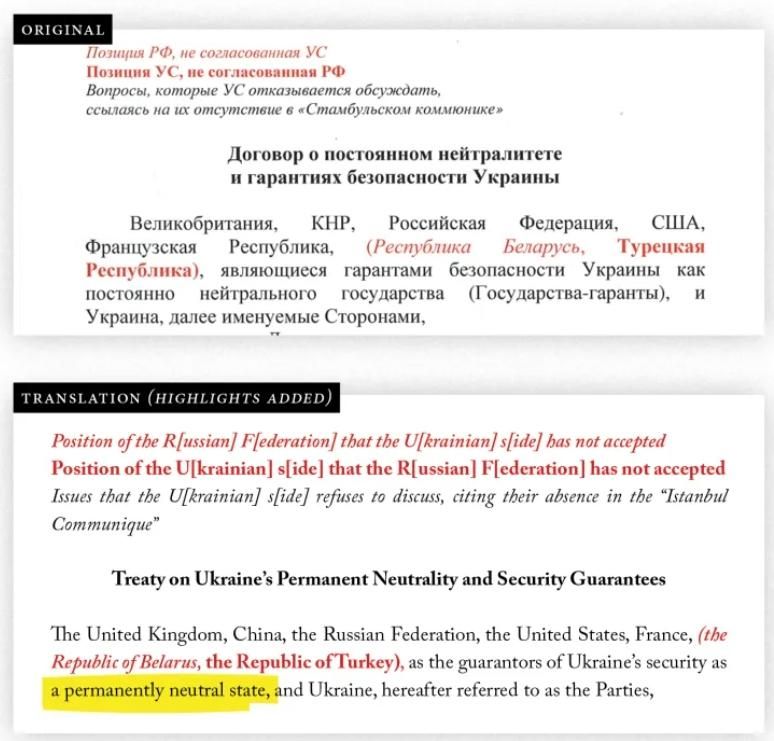
First, whereas the
communiqué and the April 12 draft made clear that guarantor states would decide
independently whether to come to Kyiv’s aid in the event of an attack on
Ukraine, in the April 15 draft, the Russians attempted to subvert this crucial
article by insisting that such action would occur only “on the basis of a
decision agreed to by all guarantor states”—giving the likely invader, Russia,
a veto. According to a notation on the text, the Ukrainians rejected that
amendment, insisting on the original formula, under which all the guarantors
had an individual obligation to act and would not have to reach consensus
before doing so.
Excerpt of a draft
Russian-Ukrainian treaty dated April 15, 2022. Red text in italics represents
Russian positions not accepted by the Ukrainian side; red text in bold
represents Ukrainian positions not accepted by the Russian side.
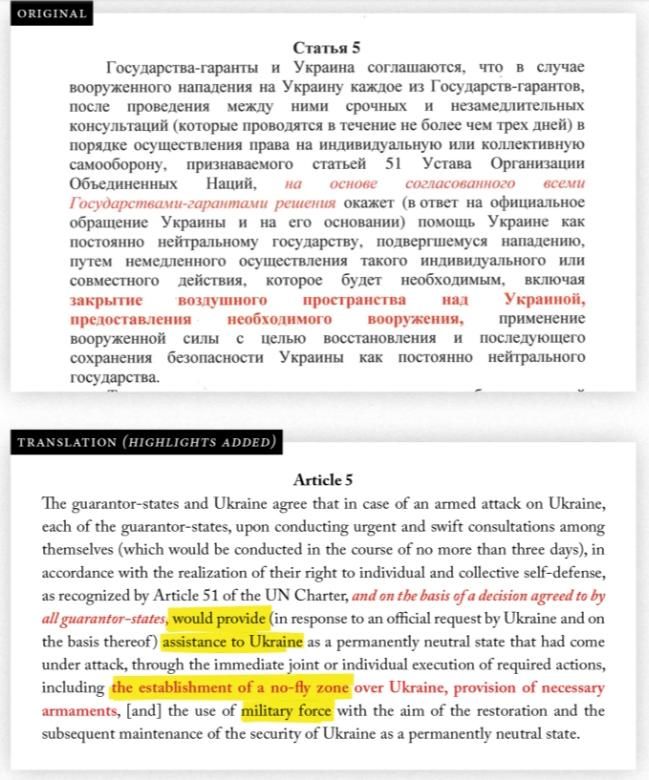
Second, the drafts contain
several articles that were added to the treaty at Russia’s insistence but were
not part of the communiqué and related to matters that Ukraine refused to
discuss. These require Ukraine to ban “fascism, Nazism, neo-Nazism, and
aggressive nationalism”—and, to that end, to repeal six Ukrainian laws (fully
or in part) that dealt, broadly, with contentious aspects of Soviet-era
history, in particular the role of Ukrainian nationalists during World War II.
It is easy to see why
Ukraine would resist letting Russia determine its policies on historical
memory, particularly in the context of a treaty on security guarantees. And
the Russians knew these provisions would make it more difficult for
the Ukrainians to accept the rest of the treaty. They might, therefore, be seen
as poison pills.
It is also possible,
however, that the provisions were intended to allow Putin to save face. For
example, by forcing Ukraine to repeal statutes that condemned the Soviet past
and cast the Ukrainian nationalists who fought the Red Army during World War II
as freedom fighters, the Kremlin could argue that it had achieved its stated
goal of “denazification,” even though the original meaning of that phrase may
well have been the replacement of Zelensky’s government.
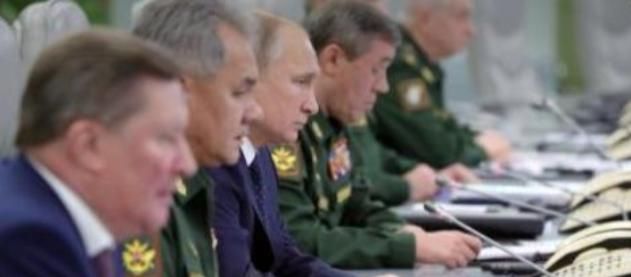
In the end, it
remains unclear whether these provisions would have been a deal-breaker. The
lead Ukrainian negotiator, Arakhamia, later downplayed their importance. As he
put it in a November 2023 interview on a Ukrainian television news program,
Russia had “hoped until the last moment that they [could] squeeze us to sign
such an agreement, that we [would] adopt neutrality. This was the biggest thing
for them. They were ready to finish the war if we, like Finland [during the
Cold War], adopted neutrality and undertook not to join NATO.”
The size and the
structure of the Ukrainian military were also the subject of intense
negotiation. As of April 15, the two sides remained quite far apart on the
matter. The Ukrainians wanted a peacetime army of 250,000 people; the Russians
insisted on a maximum of 85,000, considerably smaller than the standing army
Ukraine had before the invasion in 2022. The Ukrainians wanted 800 tanks; the
Russians would allow only 342. The difference between the range of missiles was
even starker: 280 kilometers, or about 174 miles, (the Ukrainian position) and
a mere 40 kilometers, or about 25 miles, (the Russian position).
The talks had
deliberately skirted the question of borders and territory. Evidently, the idea
was for Putin and Zelensky to decide on those issues at the planned summit. It
is easy to imagine that Putin would have insisted on holding all of the
territory that his forces had already occupied. The question is whether
Zelensky could have been convinced to agree to this land grab.
Despite these
substantial disagreements, the April 15 draft suggests that the treaty would be
signed within two weeks. Granted, that date might have shifted, but it shows
that the two teams planned to move fast. “We were very close in mid-April 2022
to finalizing the war with a peace settlement,” one of the Ukrainian
negotiators, Oleksandr Chalyi, recounted at a public appearance in December 2023. “[A]
week after Putin started his aggression, he concluded he had made a huge
mistake and tried to do everything possible to agree with Ukraine.”
What Happened?
So why did the talks
break off? Putin has claimed that Western powers intervened and spiked the deal
because they were more interested in weakening Russia than in ending the war.
He alleged that Boris Johnson, who was then the British prime minister, had
delivered the message to the Ukrainians, on behalf of “the Anglo-Saxon world,”
that they must “fight Russia until victory is achieved and Russia suffers a
strategic defeat.”
The Western response
to these negotiations, while a far cry from Putin’s caricature, was certainly
lukewarm. Washington and its allies were deeply skeptical about the prospects
for the diplomatic track emerging from Istanbul; after all, the communiqué sidestepped
the question of territory and borders, and the parties remained far apart on
other crucial issues. It did not seem to them like a negotiation that was going
to succeed.
Moreover, a former
U.S. official who worked on Ukraine policy at the time told us that the
Ukrainians did not consult with Washington until after the communiqué was
issued, even though the treaty it described would have created new legal
commitments for the United States—including an obligation to go to war with
Russia if it invaded Ukraine again. That stipulation alone would have made the
treaty a nonstarter for Washington. So instead of embracing the Istanbul
communiqué and the subsequent diplomatic process, the West ramped up military
aid to Kyiv and increased the pressure on Russia, including through an
ever-tightening sanctions regime.
The United Kingdom
took the lead. Already on March 30, Johnson seemed disinclined toward
diplomacy, stating that instead “we should continue to intensify sanctions with
a rolling program until every single one of [Putin’s] troops is out of
Ukraine.” On April 9, Johnson turned up in Kyiv —the first foreign leader to
visit after the Russian withdrawal from the capital. He reportedly told Zelensky that he thought that “any deal with
Putin was going to be pretty sordid.” Any deal, he recalled saying, “would be
some victory for him: if you give him anything, he’ll just keep it, bank it,
and then prepare for his next assault.” In the 2023 interview, Arakhamia
ruffled some feathers by seeming to hold Johnson responsible for the outcome.
“When we returned from Istanbul,” he said, “Boris Johnson came to Kyiv and said
that we won’t sign anything at all with [the Russians]—and let’s just keep
fighting.”
Since then, Putin has
repeatedly used Arakhamia’s remarks to blame the West for the collapse of the
talks and demonstrate Ukraine’s subordination to its supporters.
Notwithstanding Putin’s manipulative spin, Arakhamia was pointing to a real
problem: the communiqué described a multilateral framework that would require
Western willingness to engage diplomatically with Russia and consider a genuine
security guarantee for Ukraine. Neither was a priority for the United States
and its allies at the time.
In their public
remarks, the Americans were never quite so dismissive of diplomacy as Johnson
had been. But they did not appear to consider it central to their response to
Russia’s invasion. Secretary of State Antony Blinken and Secretary of Defense
Lloyd Austin visited Kyiv two weeks after Johnson, mostly to coordinate greater
military support. As Blinken put it at a press conference afterward, “The
strategy that we’ve put in place—massive support for Ukraine, massive pressure
against Russia, solidarity with more than 30 countries engaged in these
efforts—is having real results.”
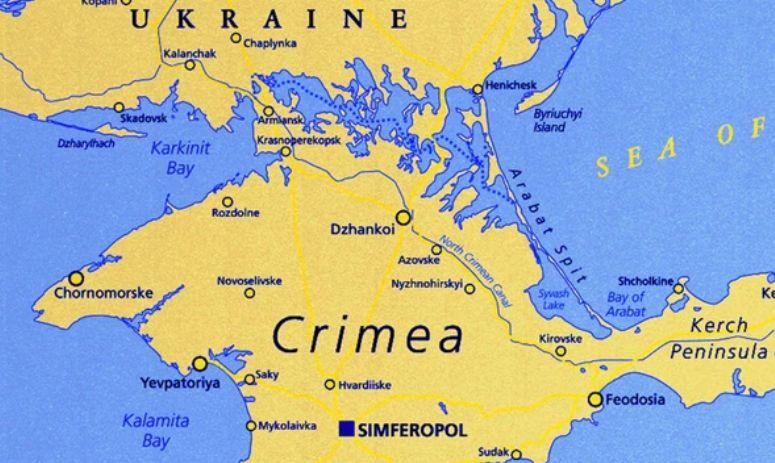
Still, the claim that
the West forced Ukraine to back out of the talks with Russia is baseless. It
suggests that Kyiv had no say in the matter. True, the West’s offers of support
must have strengthened Zelensky’s resolve, and the lack of Western enthusiasm
does seem to have dampened his interest in diplomacy. Ultimately, however, in
his discussions with Western leaders, Zelensky did not prioritize the pursuit
of diplomacy with Russia to end the war. Neither the United States nor its
allies perceived a strong demand from him for them to engage on the diplomatic
track. At the time, given the outpouring of public sympathy in the West, such a
push could well have affected Western policy.
Zelensky was also
unquestionably outraged by the Russian atrocities at Bucha and Irpin, and he
probably understood that what he began to refer to as Russia’s “genocide” in
Ukraine would make diplomacy with Moscow even more politically fraught. Still,
the behind-the-scenes work on the draft treaty continued and even intensified
in the days and weeks after the discovery of Russia’s war crimes, suggesting
that the atrocities at Bucha and Irpin were a secondary factor in Kyiv’s
decision-making.
The Ukrainians’
newfound confidence that they could win the war also clearly played a role. The
Russian retreat from Kyiv and other major cities in the northeast and the
prospect of more weapons from the West (with roads into Kyiv now under
Ukrainian control) changed the military balance. Optimism about possible gains
on the battlefield often reduces a belligerent’s interest in making compromises
at the negotiating table.
Russian and Ukrainian negotiators meeting in Istanbul,
March 2022
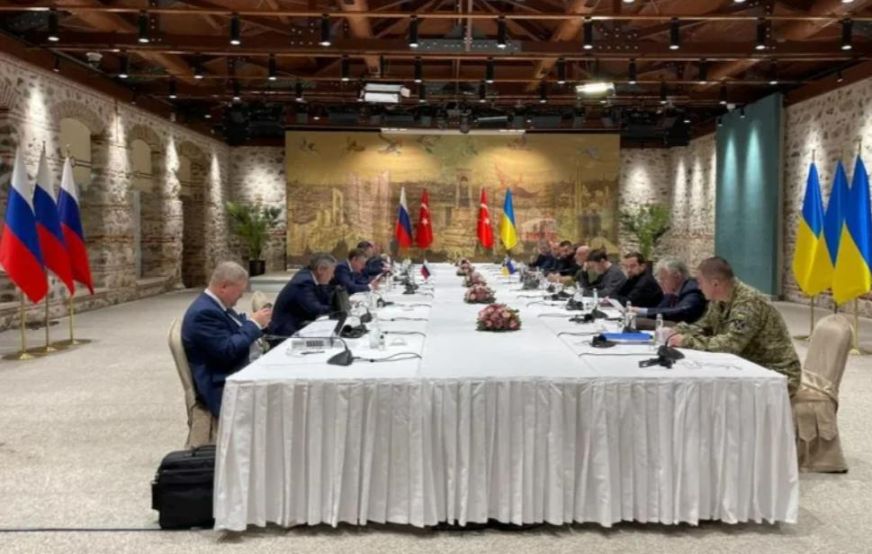
And then there is the
Russian side of the story, which is difficult to assess. Was the whole
negotiation a well-orchestrated charade, or was Moscow seriously interested in
a settlement? Did Putin get cold feet when he understood that the West would
not sign on to the accords or that the Ukrainian position had hardened?
Even if Russia and
Ukraine had overcome their disagreements, the framework they negotiated in
Istanbul would have required buy-in from the United States and its allies. And
those Western powers would have needed to take a political risk by engaging in
negotiations with Russia and Ukraine and to put their credibility on the line
by guaranteeing Ukraine’s security. At the time, and in the intervening two
years, the willingness either to undertake high-stakes diplomacy or to truly
commit to come to Ukraine’s defense in the future has been notably absent in
Washington and European capitals.
A final reason the
talks failed is that the negotiators put the cart of a postwar security order
before the horse of ending the war. The two sides skipped over essential
matters of conflict management and mitigation (the creation of humanitarian
corridors, a cease-fire, troop withdrawals) and instead tried to craft
something like a long-term peace treaty that would resolve security disputes
that had been the source of geopolitical tensions for decades. It was an
admirably ambitious effort—but it proved too ambitious.
To be fair, Russia, Ukraine,
and the West had tried it the other way around—and also failed miserably. The
Minsk agreements signed in 2014 and 2015 following Russia’s annexation of
Crimea and invasion of the Donbas covered minutiae such as the date and time of
the cessation of hostilities and which weapons system should be withdrawn by
what distance. Both sides’ core security concerns were addressed indirectly, if
at all.
This history suggests
that future talks should move forward on parallel tracks, with the
practicalities of ending the war being addressed on one track while broader
issues are covered in another.
Keep It In Mind
On April 11, 2024,
Lukashenko, the early middleman of the Russian-Ukrainian peace talks, called
for a return to the draft treaty from spring 2022. “It’s a reasonable
position,” he said in a conversation with Putin in the Kremlin. “It was an
acceptable position for Ukraine, too. They agreed to this position.”
Putin chimed in.
“They agreed, of course,” he said.
In reality, however,
the Russians and the Ukrainians never arrived at a final compromise text. But
they went further in that direction than has been previously understood,
reaching an overarching framework for a possible agreement.
After the past two
years of carnage, all of this may be so much water under the bridge. But it is
a reminder that Putin and Zelensky were willing to consider extraordinary
compromises to end the war. So if and when Kyiv and Moscow return to the
negotiating table, they’ll find it littered with ideas that could yet prove
useful in building a durable peace. The Way Forward In Ukraine.
For updates click hompage here